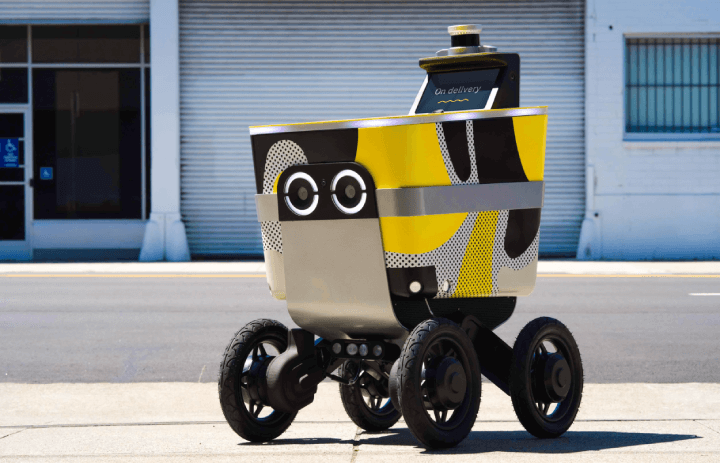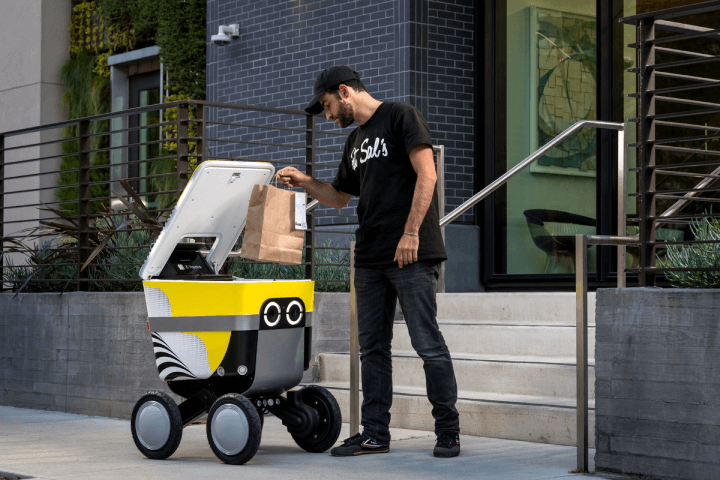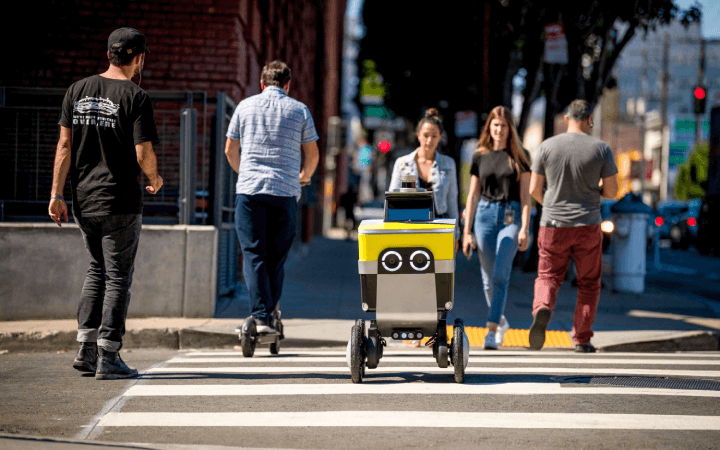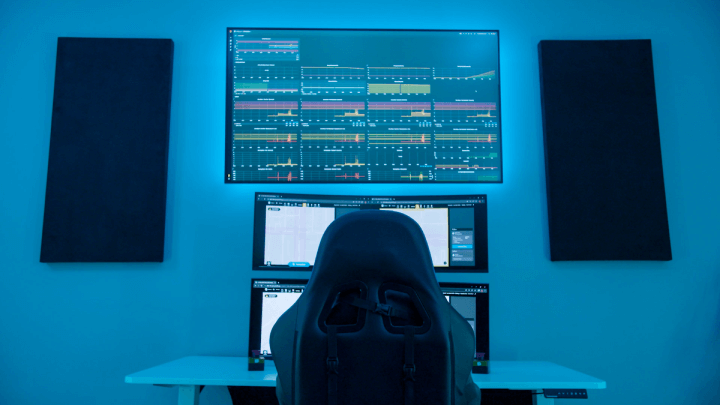Uber Eats to Deploy 2,000 Autonomous Robots from Serve Robotics
13-06-2023 | By Robin Mitchell
Recently, Serve Robotics announced that it will be delivering 2,000 delivery robots to Uber to trial out their capabilities, with a limited launch in the US. What options are available to engineers when developing an autonomous delivery system, what does Uber hope to achieve, and could such systems become practical in the future?

What options are available to engineers when developing delivery systems?
If there is one fact that has remained true, it’s that engineers are always trying to find ways to utilise technologies to make life easier, whether that comes in the form of pathfinding algorithms in traffic maps, machinery designed to simplify production processes, or planes that can get passengers anywhere in the world in just a matter of hours.
But one area that is starting to show real promise is autonomous vehicles, and while their immediate application helps to eliminate the human element during driving, it has far greater implications that extend beyond the driver. One such implication is the ability to automatically deliver goods to customers without the need for a human operator. Not only does this reduce the cost of delivery, but it also enables faster delivery times as AI operators do not require rest, and the ability to essentially copy and paste the AI into any number of drones allows for rapid scaling.
Let's delve deeper into the technical aspects of these autonomous delivery systems. The core of these systems is artificial intelligence (AI), which enables the robots to navigate their environment, avoid obstacles, and reach their destination efficiently. The AI uses a combination of technologies, including machine learning, computer vision, and sensor fusion. Machine learning algorithms allow the robots to learn from their experiences and improve their performance over time. Computer vision enables the robots to perceive their environment, while sensor fusion combines data from various sensors to achieve accurate positioning and navigation. However, implementing these technologies presents several challenges. For instance, the robots must be able to handle a wide range of scenarios, such as different weather conditions, varying lighting conditions, and unexpected obstacles. Moreover, ensuring the safety and security of the robots and the goods they deliver is a paramount concern.
However, autonomous cars are not the only options available to engineers when looking at creating automated logistic systems; there are plenty of modes of transport that can all be automated.
Airbourne Drones
Of all the options available, drones are most likely to succeed for a number of reasons. Firstly, the lack of roads and pathways significantly reduces the complexity of developing an automated drone delivery system. While other drones in the air would present some degree of challenge, it is most likely that such drones would need to integrate a pilot avoidance system (such as PilotAware) by law.
The second advantage to using flying drones is that the lack of pedestrians helps to eliminate the danger to life via collisions. Of course, a drone that fails and falls into the ground would present a serious danger, but this already applies to the millions of aircraft that fly every single day.
The third advantage to drones is that they come in different variations, including quadcopters that support vertical take-off, fixed wing which can carry heavy cargo, and airships which are highly energy efficient. Furthermore, developments in hybrid designs allow for winged aircraft to take off vertically, eliminating the need for long runways.
Nautical Drones
Air travel is undeniably the fastest way between two points, but it’s rarely the most efficient. When it comes to long-distance travel across an ocean, ships provide the most efficient method of travel and are routinely used to ship heavy cargo. Just like with airborne drones, drones navigating oceans are far less subjected to potential collisions compared to vehicles driving on roads. However, natural rock formations, tides, and coastlines can still present very serious dangers, but the slow speed at which ships travel can provide an AI with plenty of time for adjustment.
A ship that is entirely automated could also eliminate the need for crew, thereby reducing the cost of shipping, and the lack of crew allows for such ships to navigate more treacherous conditions without risking the loss of life. Such a ship would also be able to eliminate living quarters, kitchens, and many other facilities that shipping crew require on long voyages. This not only reduces the cost of building the ship but also reduces the weight of the ship, allowing for more of that space to be devoted to cargo.
Uber announces plans to utilise 2,000 robots from Serve Robotics
Uber is well known for its outsourced taxi service, but it also operates other divisions, including Uber Eats, which provides customers with a convenient food delivery network from restaurants that don’t typically offer such a service. While this service has been immensely popular, its dependence on human labour can see elevated delivery charges, and the numerous laws being introduced against individual contractor agreements risks introducing all kinds of additional charges to Uber Eats, including pension, health care, and holiday.
To help improve efficiency, Uber Eats has been in partnership with Serve Robotics, which develops autonomous delivery robots capable of navigating city environments. Now, Uber Eats recently announced that they will be looking to deploy 2,000 of these robots to trial their effectiveness.

To gain a deeper understanding of this development, we can refer to the words of Dr. Ali Kashani, co-founder and CEO of Serve Robotics, from the press release on PR Newswire. He stated, 'We are thrilled to be growing our partnership with Uber. This partnership is a major step towards mass commercialisation of robotics for autonomous delivery, and it is a testament to the success of our partnership. We are excited to continue our work with Uber to bring this innovative technology to more cities across the country.' This statement underscores the significance of this partnership in the field of autonomous delivery and highlights the potential of this technology to revolutionise the delivery industry.
The robots developed by Serve Robotics navigate pedestrian sidewalks (pavements) with Level 4 autonomy, meaning that they are able to be fully autonomous in restricted environments and paths. To understand their surroundings, the robots utilise various sensors, including LiDAR, ultrasonic transducers, and passive cameras. The combination of all of these sensors enables the robot to avoid pedestrians, reduce collision risks, and navigate pavements to get to their destination. The robotic system has a maximum payload capacity of 18.7kg and a maximum range of 25 miles on a single charge. The cargo inside the robot is secured from theft and can only be opened by the recipient with the mobile app.

Serve Command Centre: The Hub of Autonomous Deliveries
The Serve Robotics website provides a glimpse into the Serve Command Centre, which is a critical component of its autonomous delivery system. The Command Centre is where the company's advanced technology and human oversight come together to ensure smooth operations.
The Command Centre is designed to monitor and manage the fleet of Serve delivery robots. It uses a combination of real-time data and predictive analytics to optimise routes, schedule deliveries, and handle unexpected situations. This allows Serve Robotics to maintain a high level of service reliability and efficiency.

The Command Centre also plays a crucial role in ensuring the safety of the delivery robots and the public. It is equipped with features that allow human operators to take control of a robot if necessary, for example, in the event of an unexpected obstacle or complex navigation scenario. This blend of autonomy and human oversight is a key aspect of Serve Robotics' approach to safe and effective delivery operations.
Could such a system be practical in the future?
When considering that Serve Robotics will be deploying 2,000 of these robotic systems for Uber Eats, it is highly likely that over the next decade, robotic delivery systems will start to be rolled out. While airborne drones were the favoured choice for many logistic-heavy companies (such as Amazon), the simplicity of moving across the ground, combined with the greater energy efficiency, makes wheeled vehicles more practical.
However, it is likely that when these systems are proven to be reliable, other questions will be raised regarding their use and the impact that it has on society as a whole. Considering that the employment practices that Uber (and many other companies) use are already highly controversial, outright eliminating the human equation could provoke a negative backlash.
Beyond the technical and regulatory challenges, there are also important societal implications to consider. One of the main concerns is the potential displacement of jobs. As autonomous delivery systems become more prevalent, there will be less need for human delivery drivers. This could lead to job losses in the delivery industry. On the other hand, the adoption of these technologies could also create new jobs in areas such as robot maintenance and remote monitoring. Furthermore, there are ethical considerations to take into account. For instance, how should the robots be programmed to act in emergency situations? These are complex issues that require careful thought and discussion. As engineers, we have a responsibility to consider not only the technical aspects of our creations but also their impact on society.
There is no doubt that the development of rapid delivery systems that eliminate the human factor requires a high degree of brilliance from engineers, but as technology continues to dominate our lives, engineers are increasingly faced with new challenges with regard to ethics and the social implications of their developments.
References:
-
Serve Robotics. (2023). Serve Robotics - Autonomous Delivery Service. Retrieved from https://www.serverobotics.com/
-
PR Newswire. (2023). Serve Unveils Commercial Deal with Uber to Enable Scaling of Robotic Delivery. Retrieved from https://www.prnewswire.com/news-releases/serve-unveils-commercial-deal-with-uber-to-enable-scaling-of-robotic-delivery-301836751.html
-
Wessling, B. (2023). Serve Robotics to Deploy Up to 2,000 Delivery Robots with Uber. The Robot Report. Retrieved from https://www.therobotreport.com/serve-robotics-to-deploy-up-to-2000-delivery-robots-with-uber/

